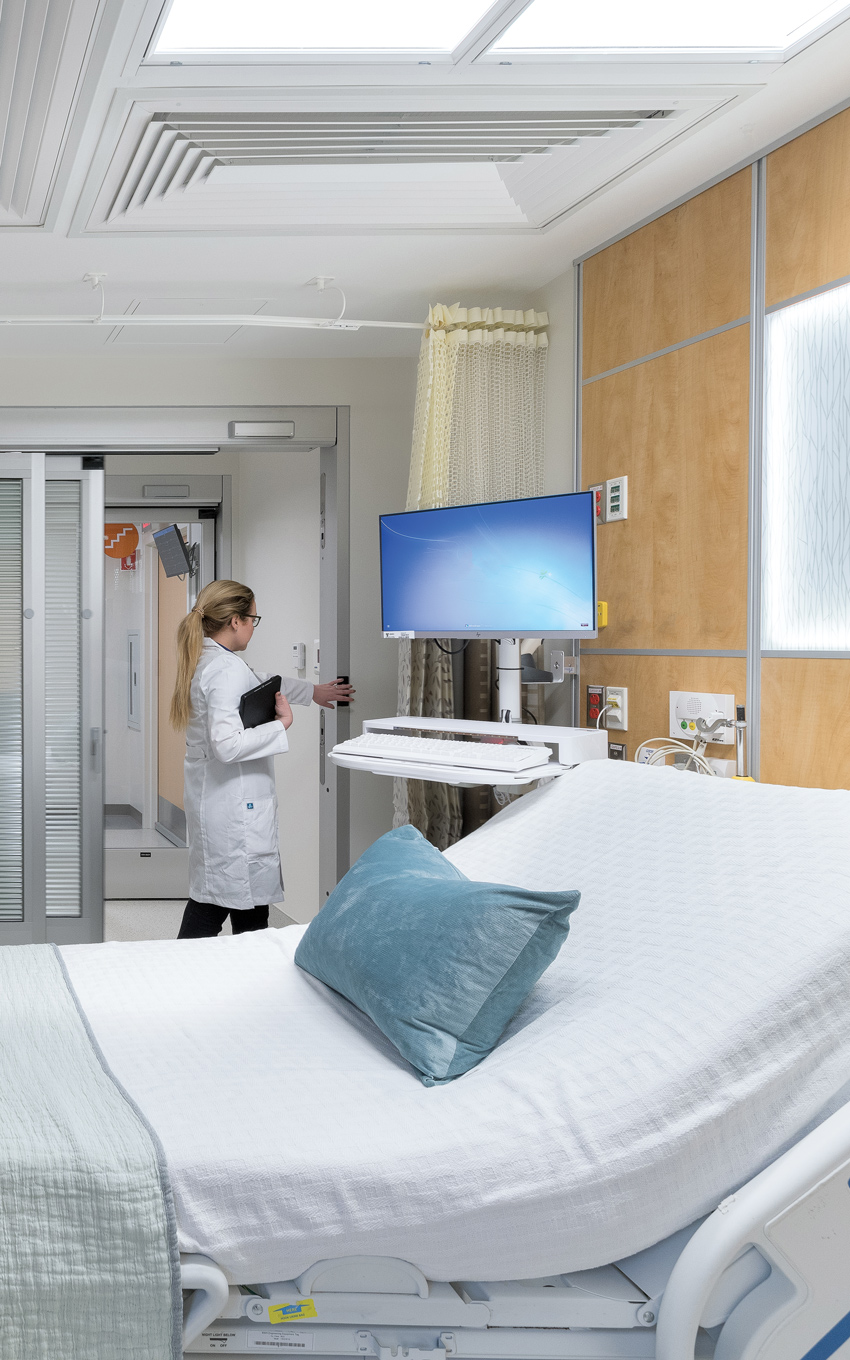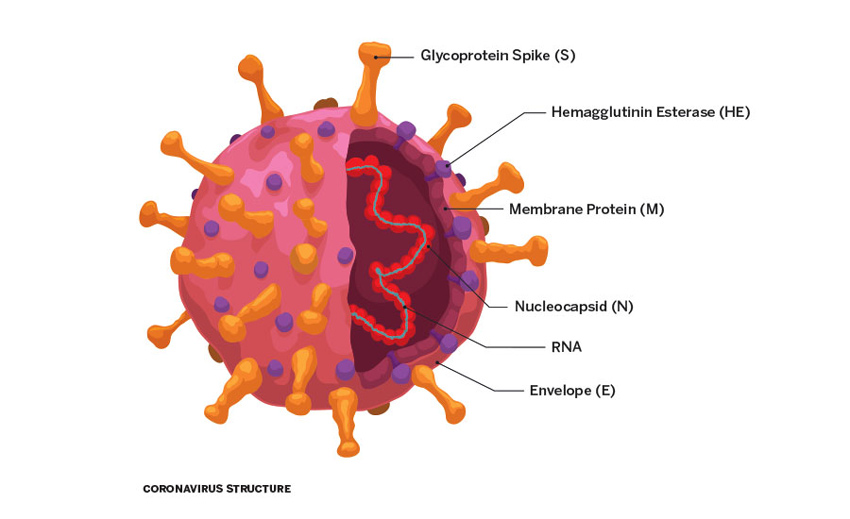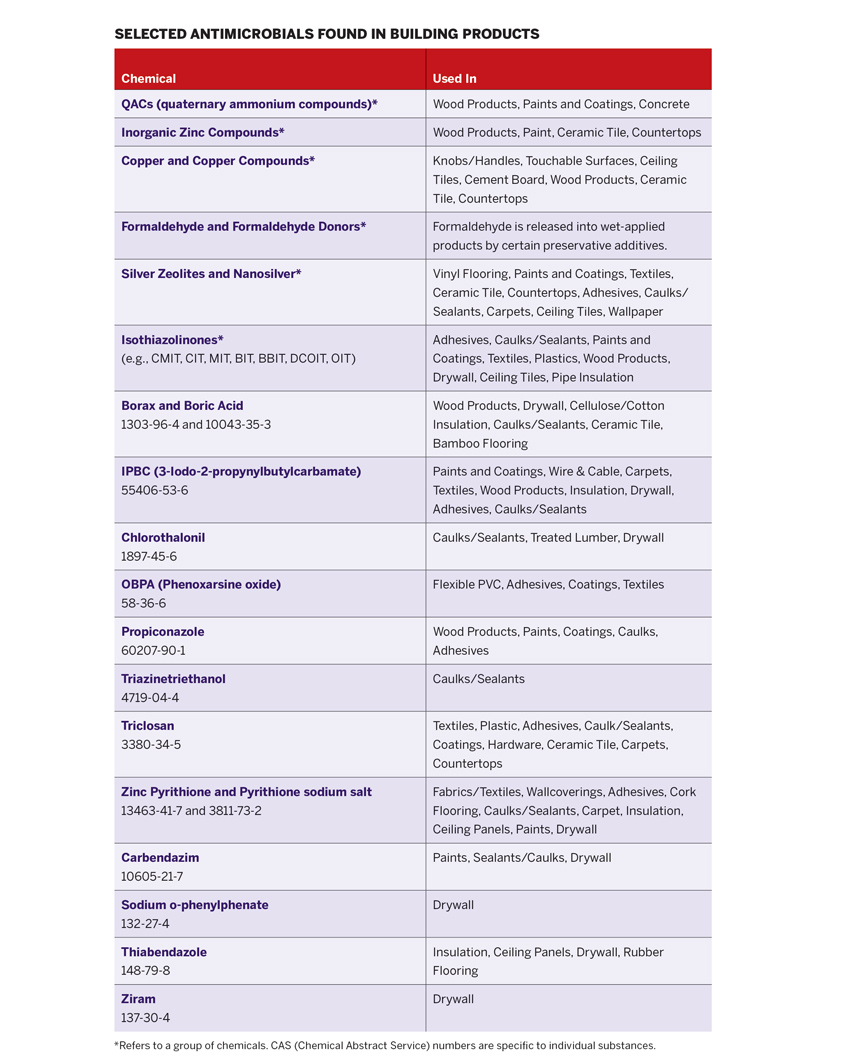Antimicrobials in the Built Environment
Learning Objectives:
- Define the term “antimicrobials” and explain their purpose in building materials, finishes, and furnishings.
- Identify some of the substances used as antimicrobials, discuss their properties, and name some of the materials they are commonly found in.
- Discuss the role of finishes and surfaces in spreading COVID-19.
- Describe spatial strategies, mechanical-system modifications, and operational and mainentance protocols that can mitigate the spread of COVID-19.
Credits:
This course is approved as a Structured Course
This course can be self-reported to the AANB, as per their CE Guidelines
Approved for structured learning
Approved for Core Learning
This course can be self-reported to the NLAA
Course may qualify for Learning Hours with NWTAA
Course eligible for OAA Learning Hours
This course is approved as a core course
This course can be self-reported for Learning Units to the Architectural Institute of British Columbia
View course on architecturalrecord.com »
Editor’s Note: Since this article went to press, Perkins and Will has decided to evaluate new information the firm has now received from manufacturers that “reportedly shows a possible human health benefit” with some interior products containing antimicrobial additives “under certain circumstances.” Healthy Building Network, P+W’s collaborator on the two white papers, states, “We stand 100 percent behind our 2017 antimicrobials report and our 2020 update,” adding that it has not received any new information that would trigger further review or affect its analysis. RECORD will continue to follow the story.
After months of being confined, Americans are slowly resuming pre-pandemic activities. In preparation for the new normal, and in hopes of preventing the spread of COVID-19, architects are working with employers to reconfigure offices and reception areas, helping restaurant-owners rethink their dining rooms, and assisting cultural institutions to create new operations plans. Clients are probably looking at staggered work schedules, tinkering with mechanical systems, and updating cleaning protocols. As one additional precaution, designers might be considering replacing finishes with those that include antimicrobial treatments. But materials experts and green-building advocates question the effectiveness of many such substances and advise caution, because of possible negative consequences for humans and the environment.

PHOTOGRAPHY: © JESSE SHAUFFER FOR SMITHGROUP
To reduce the risk of health-care-associated infection, SmithGroup used hands-free technology, among other strategies, for its renovation of an oncology unit at Brigham and Women’s Hospital in Boston.
What is an antimicrobial? The term can apply to antibacterials, biocides, and pesticides. These substances are used in thousands of consumer items, including cleaning products, household goods, and clothing. They are also incorporated into many building materials, often as preservatives, to protect the product from decay and degradation. For instance, antimicrobial agents are sometimes included in ductwork insulation to inhibit mold and mildew as a result of condensation; in paint to prevent it from spoiling in the can; and in certain plastics, to maintain flexibility. But, increasingly, antimicrobials are added to products that are then marketed—either explicitly or implicitly—as providing a health benefit to building occupants. These are the ones that specifiers should be skeptical of, say sources, products that take advantage of the public perception that all microbes are bad and that all antimicrobials must therefore be good. “The marketing aims to reinforce existing consumer beliefs,” says Bill Walsh, founder of the Healthy Building Network (HBN), a research and policy organization.
Hospitals and clinics would seem the best fit for potential germ-fighting products, especially since preventing health-care-associated infections (HAIs) is a top priority in such settings. However, government agencies, leading medical institutions, and sustainable hospital proponents have called into question the utility of using antimicrobials in interior finishes as a means of infection control. Guidance on controlling infection for hospitals, first published in 2003 by the Centers for Disease Control (CDC) and updated last year, says that there is no evidence available to suggest that use of items impregnated with antimicrobials makes patients healthier or prevents disease. In 2015, the giant managed-care provider Kaiser Permanente banned 15 antimicrobial agents from furnishings and finishes in its facilities, also citing a lack of evidence of their effectiveness. And in 2016, the nonprofit Health Care Without Harm published a study that reviewed existing research on antimicrobial additives and HAIs. It found that textiles and surfaces with such treatments “have rarely been evaluated in well-designed clinical studies for their effectiveness in contributing to HAI reduction,” determining that the benefits and risks of antimicrobial substances in hospital furnishings were still largely unknown.
Other researchers have come to similar conclusions. Healthy Environments: Understanding Antimicrobial Ingredients in Building Materials, a 2017 white paper, produced by the architecture firm Perkins and Will in collaboration with HBN, states that “no evidence yet exists to demonstrate that products intended for use in interior spaces that incorporate antimicrobial additives actually result in healthier populations.” Perkins and Will and HBN revisited the report this past spring, in light of the pandemic, issuing a new document confirming their earlier conclusions. “We found no new evidence,” says HBN’s Walsh. Mary Dickinson, a codirector of Perkins and Will’s materials lab, explains that they were searching for “a demonstration of efficacy, not just in the laboratory, but also in the built environment.”

IMAGES: © GETTY IMAGES
SARS-CoV-2 consists of RNA enclosed within an envelope of lipids studded with various kinds of proteins. The fatty membrane is readily destabilized by soap and water.
Despite scant indication of health benefits, architects and clients may still be tempted to specify building products with antimicrobial additives as one extra measure in the fight against COVID-19. But sources point out that, not only has research thus far been largely unconvincing in proving the occupant-health benefits of finishes containing antimicrobials, it has primarily focused on bacteria, rather than viruses. “There is a lack of standardized protocols for evaluating the impact of antimicrobial additives on many kinds of viruses and their infectivity,” says Ted Schettler, author of the 2016 Health Care Without Harm report and science director of the Science and Environmental Health Network. “This is really the topic of interest with SARS-CoV-2,” he says, referring to the virus that causes COVID-19.
What is more concerning: antimicrobial substances come with a long list of potential downsides for both public health and ecosystems. Widespread use of this large group of chemicals may be contributing to the resistance to therapeutic antibiotics. Some are bioaccumulative and are endocrine disruptors or suspected carcinogens. So, if they are released into the wider environment, the substances increase in concentration as they move up the food chain. As a result, they have been flagged as chemicals of concern by such groups as the International Living Future Institute, which includes antimicrobials in its Living Building Challenge Red List, and the Green Science Policy Institute, which has designated the group of substances as one of six families of chemicals whose use it aims to curtail.
Among the antimicrobial compounds that are common in finishes and furnishings, often as preservatives, is triclosan. Although it was banned by the U.S. Food and Drug Administration in 2016 for use in soaps and hand-washes due to a lack of data showing it was safe and effective, triclosan can still be found in consumer products as well as building materials, including some countertops, textiles, mortar, and grout. It is considered harmful to aquatic ecosystems, as are quaternary ammonia compounds (QACs), a typical ingredient in industrial disinfectants and personal-care products, and used in some wood products and specialty paints.

The antimicrobial properties of metals, including silver and copper, have been relied upon for centuries. But now there is a focus on copper, after it performed better than a host of other materials in recent studies looking at how long SARS-CoV-2 remained infectious on surfaces. Just four hours after contamination, the virus on the pure copper surface was no longer considered viable, compared with up to seven days for plastic and stainless steel, and up to four days for glass.
Many copper-containing alloys are registered with the U.S. Environmental Protection Agency and have gone through a testing and assessment protocol. This process allows manufacturers of products using these alloys to make a health-benefit claim, but only for specific strains of bacteria. And while the antimicrobial properties of copper and its alloys have been much examined in the laboratory, showing reductions in microbial populations, there have been fewer studies looking at the association between copper surfaces and infection in the real world. One recent systematic evaluation of the research into the efficacy of copper surfaces in reducing infection in health-care settings was critical of the studies’ designs and determined that “no clear effect on healthcare associated infections has been demonstrated yet.” The assessment also pointed to a potential for a conflict of interest. Of the 10 studies conducted in health-care settings on the impact of copper surfaces on microbial contamination or on HAIs, “all received financial support from copper industries and/or at least one author was affiliated with the copper industry.”
Another antimicrobial-metal application is Silver zeolites, which are sometimes included in carpet fibers, wallpaper, and paints, among other products. The European Chemicals Agency has labeled these zeolites—highly porous crystals that can store silver ions and then slowly release them—as “suspected to be toxic to reproduction.” Sources say, however, a newer concern with both silver and copper is the increasing use of antimicrobial coatings and polymers that incorporate metallic nanoparticles (ultrafine elements, about 500 to 100,000 times smaller than the thickness of a human hair). These tiny-scale materials are potentially more effective as antimicrobials than their full-scale counterparts, but also possibly hazardous, since scientists don’t yet fully understand how they work. “They are not yet well regulated or studied,” says Walsh, “so there is concern about how they interact with humans and the environment.”
How big a role do finishes and surfaces play in transmission of SARS-CoV-2? Our understanding of the virus is still evolving, but current evidence indicates that the primary means of transmission is from person to person, through respiratory droplets and smaller aerosols that are expelled when an infected person coughs, sneezes, or talks. Contaminated inanimate objects (known to medical professionals as “fomites”) are thought to play a secondary but still important role. A healthy person can become infected by touching a fomite and then touching their own mouth, nose, or eyes, but this route is now considered less likely than airborne infection.
The good news about contaminated surfaces is that the SARs-CoV-2, due to its structure, is responsive to basic soap and water. The virus consists of ribonucleic acid, or RNA, enclosed within an envelope of lipids studded with various kinds of proteins, including a barblike “spike” protein that enables the virus to invade human cells. Soap disrupts the fatty envelope, making the virus essentially fall apart. Hence the admonition, among others from the CDC, to frequently wash our hands. For surfaces, Schettler advises cleaning first, which involves the removal of visible soil, before disinfecting, which entails the elimination of many or all pathogenic microorganisms.

TABLE: COURTESY HEALTHY BUILDING NETWORK
Most antimicrobials are added to products to protect the material from mildew, mold, or spoilage. The above list includes both this typical use and uses where the substances are added to market the product as “antimicrobial.” Not all products in any given type will necessarily contain the biocide indicated or any other antimicrobial additive.
Such cleaning and disinfection procedures do not typically fall under the purview of design teams. However, architects can make spaces that minimize the opportunity for pathogens to collect and spread, and are easier for their clients to maintain, while still avoiding materials that include antimicrobials. Andrew Brumbach, a SmithGroup senior associate, points to his firm’s 2018 renovation project for Brigham and Women’s Hospital in Boston, part of the Partners Healthcare system. The consortium is a participant in the Healthier Hospitals program, whose mission encompasses the promotion of safer chemicals and the elimination of potentially toxic interior products such as those containing antimicrobials. SmithGroup’s 10-bed unit for immunocompromised oncology patients relies on strategies for infection control that could be applicable to other building types. The scheme reduces the number of high-touch surfaces by deploying hands-free technologies such as wave-activated doors and faucets; separates the work zone from the handwashing sink to avoid cross-contamination; and, for ease of cleaning, includes durable nonporous finishes and curved room corners.
Schettler predicts that businesses and institutions will implement a layering of administrative and design adaptations to ready their spaces for reoccupancy. He envisions a de-densification of interiors, both by rearranging them and through staggered schedules. He points to possible mechanical-system improvements, including new filters, increased outdoor air, and controlled UV-light treatment. And, of course, he advocates for strict cleaning and disinfection regimens.
Even with these measures, however, he anticipates that architects and their clients may still want to specify antimicrobial finishes. And he also expects that manufacturers of building materials and furnishings will feel increasing pressure to include such additives in their products. But he advises that they examine the safety and efficacy of these treatments, asking if, in addition to reducing the microbial load on surfaces, they also reduce the likelihood of infection. “This is what we are really trying to accomplish,” he says. He advocates for purchasing and design decisions to be made on the basis of data, rather than on “hope and assumptions.”
Supplemental Materials
Schettler, Ted MD, MPH, Science and Environmental Health Network. “Antimicrobials in the Time of Coronavirus.” Six Classes Virtual Retreat, May 4, 2020.
 |
Architectural Record is the #1 source for design news, architect continuing education, and info on sustainability, houses, projects, and architectural products. |













